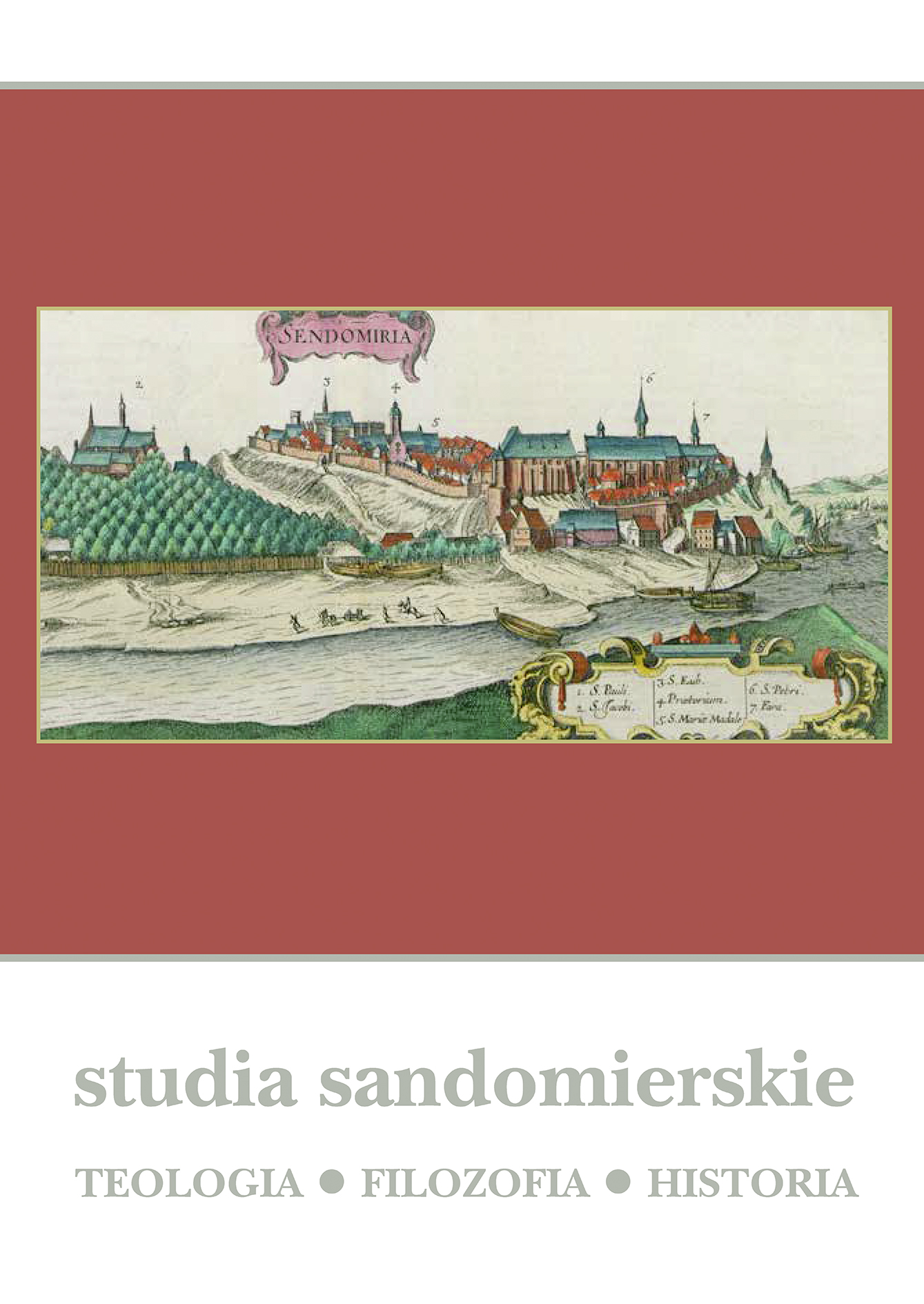Elementary Education in the Sandomierz Voivodeship (Radom Departmentand Governorate) against the Background of the Situation in the Countrysideduring the Partition Period
DOI:
https://doi.org/10.15633/sts.3004Keywords:
history of education, elementary education, education of the people, Poland under partition, Russification, social and cultural life in the countryside in the 19th centuryAbstract
With the state adoption of an educational model which was initiated by the Commission of National Education (1773-1794), the former parish schools became primary schools (elementary, public), which from then on were to be run by the municipal government. In the case of the lands of the Russian partition truncated to the borders of the Kingdom of Poland, called the Vistula Kingdom after the January Uprising, this process was finalized in the 1860s. In the times of the Duchy of Warsaw and the Kingdom of Poland, the educational projects undertaken to serve the development of education in rural areas were largely devoid of executive foundations. They were still based on the good will of landowners and tenants of government estates and implemented with the help of volunteer clergy, the peasants themselves perceived it as another manifestation of financial oppression. It was assumed that they would have to bear the costs related to the functioning of the school. However, due to the burden on the public treasury and provision of various serf duties, peasants were reluctant to commit paying another fee, which was the school levy. Elementary education was organized under difficult conditions, in a country devastated by wars with an empty treasury, without scientific or teaching staff, and an inefficient administration, after the January Uprising, the invader's Russification policy gained even more strength. In the 19th and the first decades of the 20th century, the elementary schools in the countryside still retained its class character, which depreciated it in every respect: social, scientific, and cultural.
References
Opracowania:
Araszkiewicz S., Sytuacja szkolnictwa i oświaty w zaborze rosyjskim w latach 1831–1918. Szkolnictwo elementarne, w: Dzieje szkolnictwa i oświaty na wsi polskiej do 1918, red. S. Michalski, t. 1, Warszawa 1982, s. 141–204.
Burszta J., Społeczno-kulturowe przesłanki rozwoju edukacji (w XIX i na początku XX wieku), w: Dzieje szkolnictwa i oświaty na wsi polskiej do 1918, red. S. Michalski, t. 1, Warszawa 1982, s. 96–105.
Caban W., Szkolnictwo elementarne na ziemi kielecko-radomskiej (1809–1862), Kielce 1983.
Caban W., Szkolnictwo elementarne w województwie sandomierskim w okresie działania ustawy szkolnej z 1833 r., „Rocznik Świętokrzyski” 6 (1977), s. 83–96.
Caban W., Urban W., Z badań nad poziomem oświaty społeczeństwa w Radomskiem w pierwszej połowie XIX w., „Rocznik Świętokrzyski. Prace Humanistyczne” 8 (1980), s. 31–49.
Dzieje szkolnictwa i oświaty na wsi polskiej do 1918, red. S. Michalski, t. 1, Warszawa 1982.
Gierszewska B.L., Życiowa konieczność czy wybór? Kilka słów o nauczycielkach szkół elementarnych guberni radomskiej w okresie popowstaniowym, w: Ad Personam. Prace ofiarowane Profesorowi Adamowi Massalskiemu w 75. rocznicę urodzin, red. C. Jastrzębski, Kielce 2019, s. 163–179.
Historia wychowania, red. Ł. Kurdybacha, t. 2, Warszawa 1967.
Juśko E., Wpływ szkolnictwa ludowego autonomicznej Galicji na kształt polskiej szkoły powszechnej w latach 1918–1922, Lublin 2006.
Karbownik H., Szkoła elementarna w Klimontowie w latach 1792–1914, „Studia Sandomierskie” 5 (1985–1989), s. 79–107.
Korzeniowska W., Edukacja i wychowanie różnych warstw społecznych na ziemiach polskich – od drugiej połowy wieku XIX do roku 1918, Kraków 2004.
Orczyk A., Zarys historii szkolnictwa i myśli pedagogicznej, Warszawa 2008.
Pająk J.Z., Historia podziałów administracyjnych, w: Mała Ojczyzna – Świętokrzyskie. Dziedzictwo kulturowe, red. G. Okła, Kielce 2002, s. 105–113.
Pelczar R., Rzymskokatolickie szkoły trywialne w Galicji w latach 1774–1875, Lublin 2014.
Podgórska E., Edukacja w Księstwie Warszawskim i Królestwie Polskim do powstania listopadowego, w: Dzieje szkolnictwa i oświaty na wsi polskiej do 1918, red. S. Michalski, t. 1, Warszawa 1982, s. 105–140.
Podgórska E., Sytuacja szkolnictwa i oświaty w zaborze austriackim. Szkolnictwo elementarne, w: Dzieje szkolnictwa i oświaty na wsi polskiej do 1918, red. S. Michalski, t. 1, Warszawa 1982, s. 248–298.
Przeniosło M., Postawa chłopów Królestwa Polskiego wobec szkoły w latach I wojny światowej, w: Nauka i oświata a społeczności lokalne na ziemiach polskich w XIX i XX wieku. Prace ofiarowane Profesorowi Adamowi Massalskiemu w sześćdziesiątą rocznicę urodzin, red. W. Caban, Kielce 2003, s. 153–164.
Szewczuk D., Seminaria nauczycielskie w Królestwie Polskim (1866–1915), Lublin 2015.
Winiarz A., Szkolnictwo Księstwa Warszawskiego i Królestwa Polskiego (1807–1831), Lublin 2002.
Włoczyk P., Szkoły i szpitale w diecezji sandomierskiej w okresie rządów bpa Adama P. Burzyńskiego (1820–1830), „Nasza Przeszłość” 85 (1996), s. 207–266.
Wroczyński H., Dzieje oświaty polskiej 1795–1945, Warszawa 1996.
Downloads
Published
Issue
Section
License

This work is licensed under a Creative Commons Attribution 4.0 International License.
Authors who publish with this journal agree to the following terms:
- Authors retain the copyright and full publishing rights without restrictions, and grant the journal right of first publication with the work simultaneously licensed under a Creative Commons Attribution 4.0 International License that allows others to share the work with an acknowledgement of the work's authorship and initial publication in this journal.
- Authors are able to enter into separate, additional contractual arrangements for the non-exclusive distribution of the journal's published version of the work (e.g., post it to an institutional repository or publish it in a book), with an acknowledgement of its initial publication in this journal.
- Authors are permitted and encouraged to post their work online (e.g., in institutional repositories or on their website) prior to and during the submission process, as it can lead to productive exchanges, as well as earlier and greater citation of published work (See The Effect of Open Access).

